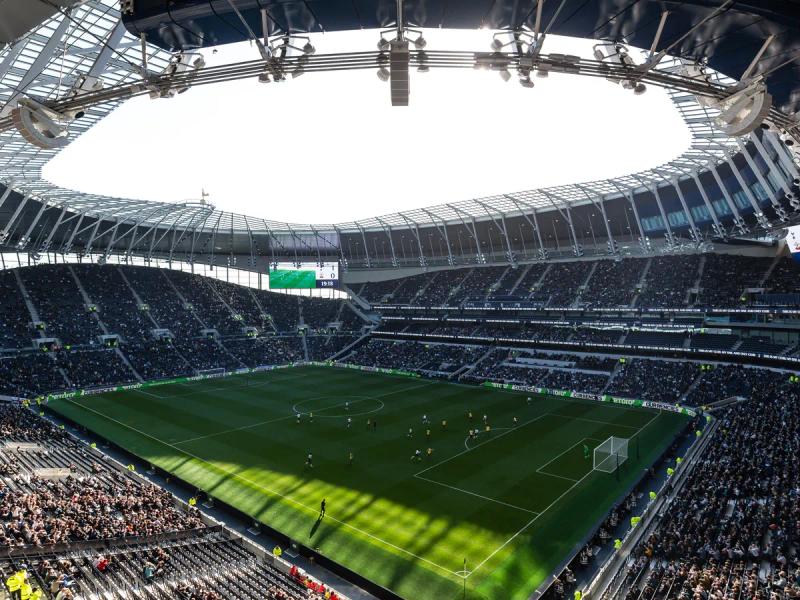In the dynamic world of sports and entertainment, stadiums are no longer mere venues; they are architectural marvels and experiential wonders. The 21st century has witnessed a paradigm shift in stadium design, with visionary architects and engineers pushing the boundaries of creativity, sustainability, and fan engagement. In this exploration, we delve into the evolution of stadium concepts and builds that are reshaping the way we experience live events.
The Rise of Iconic Designs
Avant-Garde Architecture: A New Dawn in Stadium Design
The Allure of Fluidity: The Qatar Foundation Stadium (2022)
The upcoming Qatar Foundation Stadium, designed by Zaha Hadid Architects, stands as a testament to fluid and futuristic design. With its undulating lines and innovative use of materials, the stadium not only captures attention but also integrates seamlessly with its surroundings. The concept embraces sustainability, featuring a cooling system that utilizes passive design principles to combat the desert heat.
Adaptive and Transformative Spaces: Tottenham Hotspur Stadium (2019)
In North London, the Tottenham Hotspur Stadium redefines adaptability. Designed by Populous, the stadium boasts a retractable pitch that reveals an artificial surface underneath, allowing the venue to host not only football but also NFL games and concerts. This multi-purpose approach maximizes the stadium's utility and ensures it remains a hub of activity beyond match days.
Technological Integration for Enhanced Experiences
Smart Stadiums: Embracing Technology for Fan Engagement
The Mercedes-Benz Stadium (2017): A Technological Marvel
Located in Atlanta, the Mercedes-Benz Stadium is a pioneer in smart stadium technology. With its cutting-edge fan engagement systems, including a 360-degree Halo Video Board and a state-of-the-art mobile app, the stadium provides an immersive experience for spectators. The sustainable design, featuring a retractable roof and energy-efficient systems, sets a benchmark for environmentally conscious stadiums.
Augmented Reality and Virtual Reality: The Future Unveiled
The incorporation of augmented reality (AR) and virtual reality (VR) is transforming the way fans interact with the game. Imagine putting on VR glasses and witnessing a match from the perspective of your favorite player or using AR apps to access real-time stats while sitting in the stands. This immersive technology is gradually becoming a staple in modern stadium experiences.
Sustainability and Green Initiatives
Eco-Friendly Stadiums: Balancing Passion with Environmental Responsibility
The Banc of California Stadium (2018): A Green Oasis in the City
Situated in Los Angeles, the Banc of California Stadium is a model of sustainability. With features like on-site solar panels, a rainwater harvesting system, and a commitment to zero waste, the stadium embodies environmental responsibility. The incorporation of green spaces and natural ventilation enhances the overall fan experience while contributing to the urban ecology.
Zero-Emission Initiatives: The Forest Green Rovers Eco Park (TBD)
The proposed Forest Green Rovers Eco Park in Gloucestershire, England, is slated to be the world's greenest football stadium. Designed by Zaha Hadid Architects, it focuses on sustainability with a wooden structure, on-site renewable energy generation, and an emphasis on biodiversity. The stadium aims to be carbon neutral, showcasing the potential for stadiums to lead the way in eco-friendly practices.
Fan-Centric Design and Inclusive Spaces
1. Inclusive Design: The Accessibility Revolution
The Johan Cruyff Arena (2020): Prioritizing Inclusivity
Formerly known as the Amsterdam Arena, the Johan Cruyff Arena is a benchmark for inclusive design. Renovated with accessibility in mind, it features raised platforms for wheelchair users, sensory spaces for fans with autism, and other amenities to ensure an inclusive and welcoming environment for all spectators.
Stadiums as Community Hubs: The Vision of Populous
Global architectural firm Populous envisions stadiums not just as venues for events but as community hubs. Their concepts include mixed-use spaces, retail areas, and recreational zones surrounding the stadiums, creating a sense of community engagement beyond game days. This approach aims to make stadiums integral parts of the urban fabric.
The Future Unveiled: Bold Concepts and Imaginative Builds
Floating Stadiums: Merging Luxury and Innovation
As we look to the future, the concept of floating stadiums has emerged as a futuristic and luxurious possibility. These stadiums, set atop floating platforms, could provide unparalleled views and a unique fan experience. While still in the realm of imaginative concepts, such ideas showcase the bold thinking shaping the stadiums of tomorrow.
Underground Stadiums: Balancing Space and Spectacle
With urban space becoming more limited, the concept of underground stadiums is gaining traction. Architects are exploring the possibility of constructing stadiums beneath the Earth's surface, utilizing advanced engineering to create expansive and awe-inspiring subterranean venues. This approach not only addresses spatial constraints but also opens up new avenues for architectural innovation.
Conclusion: Where Passion Meets Progress
The evolution of stadium concepts and builds is a testament to the fusion of passion for sports with the progress of architectural and technological innovation. From iconic designs that redefine city skylines to sustainable stadiums that embrace environmental responsibility, the future promises an exciting era for sports enthusiasts. As we embark on this journey, the stadiums of tomorrow are poised to be not just venues for events but immersive, inclusive, and technologically advanced spaces that celebrate the spirit of sports and entertainment.
